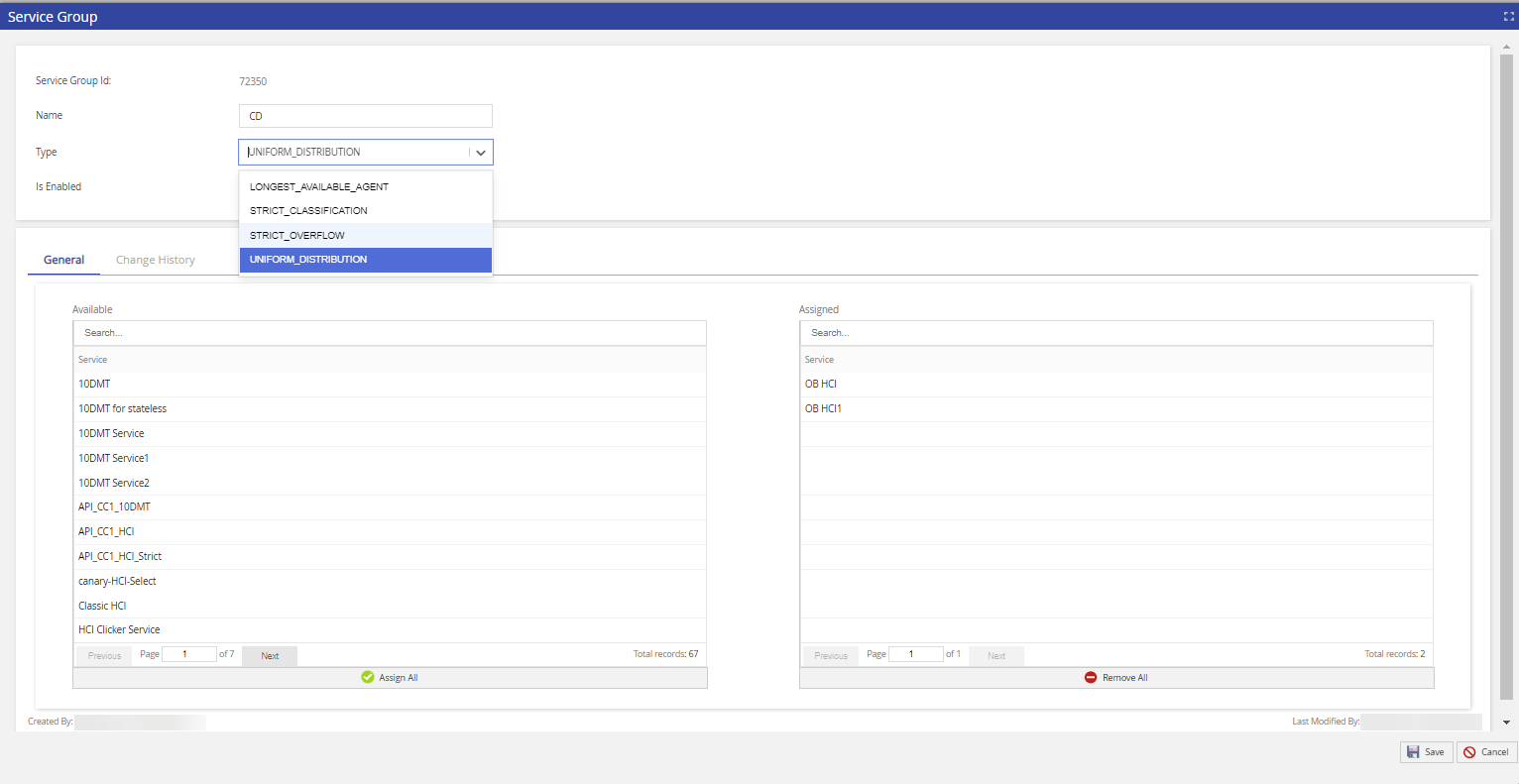Download PDF
Download page Managing Service Groups.
Managing Service Groups
A service group is defined as a virtual grouping of services used for call routing or reporting. A service group can be used to define which outbound services an agent can be signed into to receive traffic from the contributing inbound and outbound services. Call Blending is a feature in which agents can receive call traffic from an Inbound or Outbound service they are not signed into, while simultaneously participating in outbound campaigns on their service. Call Blending is enabled through the Service Groups window. The service(s) contributing dial traffic to and receiving traffic from a service group are defined in Configure > Services > Service Groups. The major uses of the service group section include:
- Blending traffic from Inbound services to agents working on Outbound campaigns.
- Blending traffic from multiple outbound dialing services with Call Priority as established on the service's Message.
- Defining which services make up a Queue for queue-based transfers.
The service group section is available by navigating to Configure > Services > Service Groups. From here you can see the list of existing service groups.

A second optional layer of routing specification, Agent Skills, further defines which specific agents, as well as their priority over other agents, receive traffic. See the Agent Skill section for more information.
The degree of availability of agents to which a service group uses the Agent Skill is defined by the service group’s “Type”. The following types are available:
- LONGEST_AVAILABLE_AGENT: If no agents with the required agent skill set are available, the call is transferred to the longest available agent in the same service group regardless of skill. Once the configured Service Max Wait Time is reached, the call is routed to the exit or failure path as configured in the message template.
- STRICT_CLASSIFICATION - If no agents with the required agent skill set are available, the call is routed to the exit or failure path, as configured in the message template. Also, once the configured Service Max Wait Time is reached, the call is routed to the exit or failure path, as configured in the message template.
- STRICT_OVERFLOW - If agents with the proper skill are not available to take the call, it is placed on hold until the maximum hold time (configured in the message template) is reached. You can configure the ACD Max Wait Time Proficiency (1-10) in the message template. This parameter controls how long a call remains on hold while waiting for an agent to become available with the corresponding skill set. After the required wait time, the system expands the target selection to include all agents in the service group, regardless of skill set and the call is bridged to the longest available agent. The search for an available agent will continue until the service's Max Wait time is exceeded.
- UNIFORM_DISTRIBUTION - Clicker Agents assigned to HCI or 10DMT services that are configured with this type of service group can initiate outbound calls on HCI or 10DMT. A maximum of 10 services are recommended for optimal performance with this service group type.
